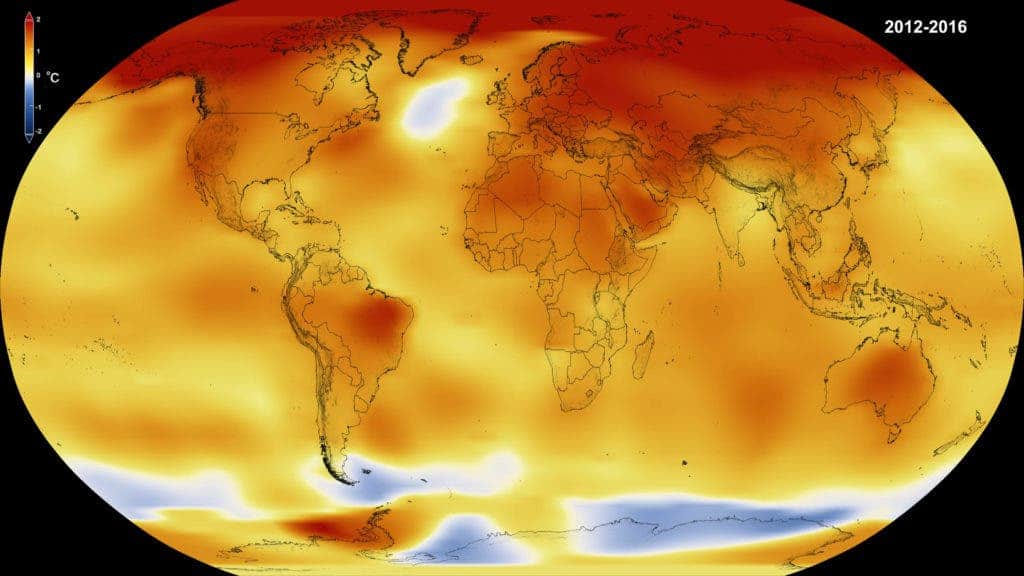In case anyone had any doubts, the year that just ended was the hottest on record.

Ever since 1880, scientists have been monitoring the Earth’s average temperature. This gives us a pretty good idea that climate change is happening, and it’s happening now — as in now now. The past three years have all broken the record for ‘hottest year,’ with 2016 being no exception. Globally-averaged temperatures in 2016 were 1.78 degrees Fahrenheit (0.99 degrees Celsius) warmer than the mid-20th century mean, emphasizing an already alarming trend.
“2016 is remarkably the third record year in a row in this series,” said GISS Director Gavin Schmidt. “We don’t expect record years every year, but the ongoing long-term warming trend is clear.”
The GISS Surface Temperature Analysis (GISTEMP) is an estimate of global surface temperature change employed not only by NASA, but also other organizations as well (such as NOAA). NOAA itself reached the same conclusion, that 2016 was the hottest year on record, despite using the data in a slightly different way (especially around the polar areas).
Of course, weather station locations and measurement practices have somewhat changed over time and do lead to some uncertainties in interpreting the data, but NASA monitors Earth’s vital signs from land, air, and space with a fleet of satellites, as well as airborne and ground-based observation campaigns. So the validity of the data is not really in question and neither is the interpretation. The Earth is simply getting hotter, as is clearly visible from the animated plot below:

Most of the warming we’ve observed has happened in the past 35 years, with 16 of the 17 warmest years on record occurring since 2001. Not only that, but 2016 was special in its own right: not only was it the hottest year, but 8 out of the 12 months were the hottest ones ever observed. October, November, and December of 2016 were the second warmest of those months on record – in all three cases, behind records set in 2015.
To be perfectly honest, some of the warming was caused by phenomena such as El Niño or La Niña, which warm or cool the upper tropical Pacific Ocean and can alter global weather patterns — but they merely exacerbate the heating we are causing ourselves. Researchers estimate that the impact of El Niño in 2016 was 0.2 degrees Fahrenheit (0.12 degrees Celsius). Another important point to make is that the heating isn’t uniform. When we say that the Earth was 0.99 degrees Celsius warmer than the 20th century mean, we don’t mean that every point on the globe was exactly 0.99 degrees hotter – some areas heat much more than others. Disturbingly, it’s usually the polar areas which heat up more than the others. This could create a feedback mechanism which could heat the planet even more – a kind of reverse snowball effect.
The full 2016 surface temperature data set and the complete methodology can be found at https://data.giss.nasa.gov/gistemp/


